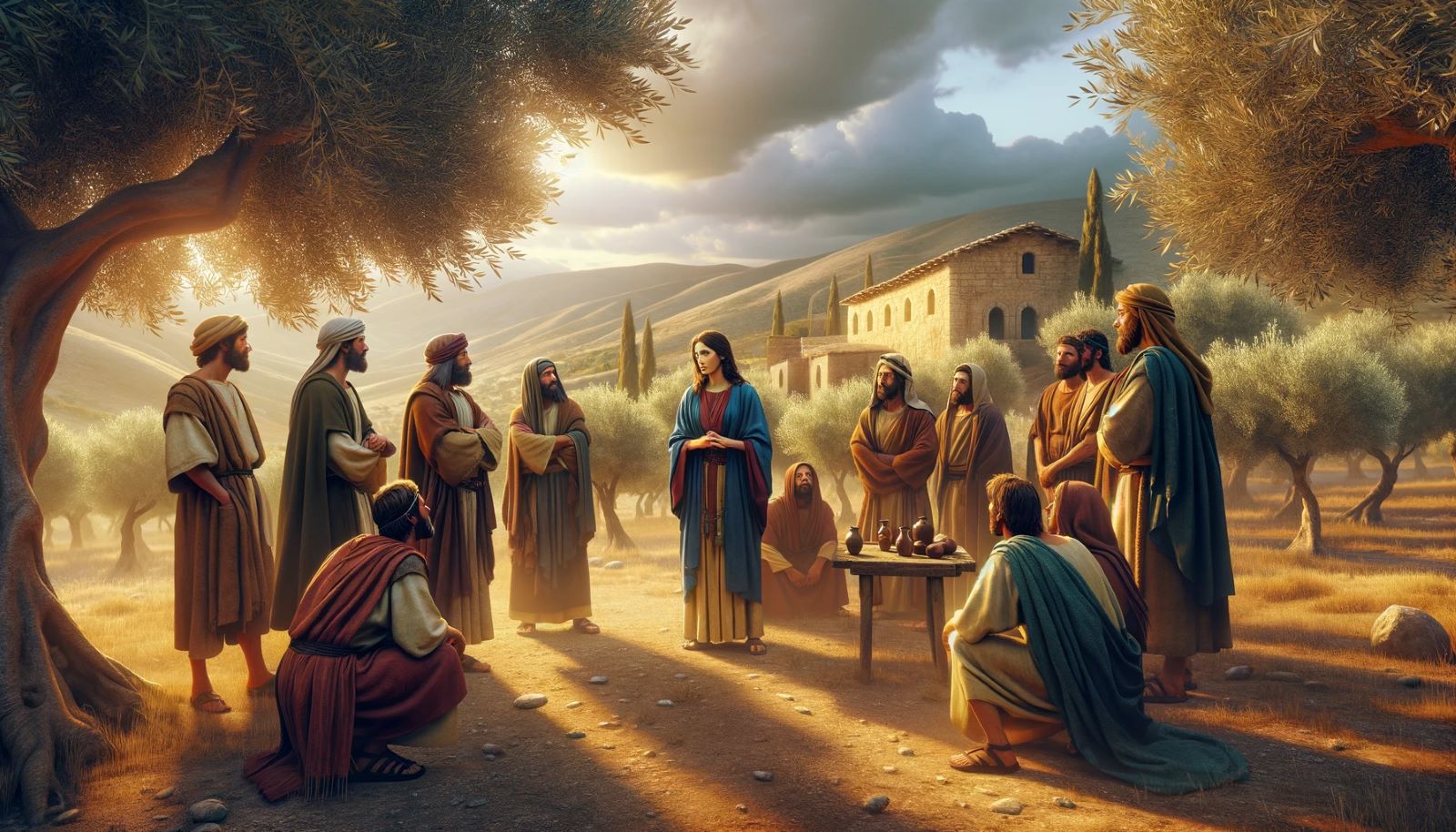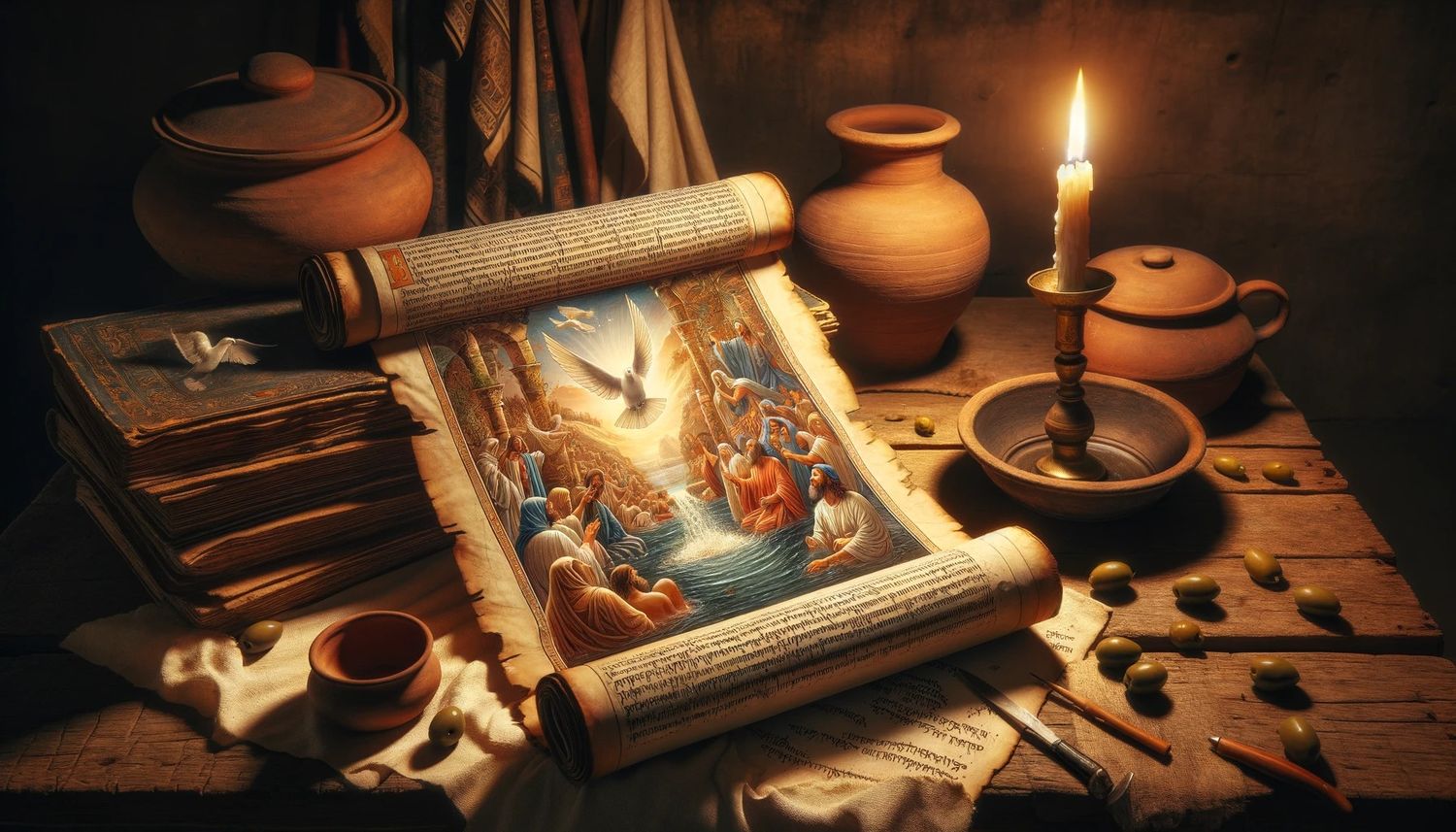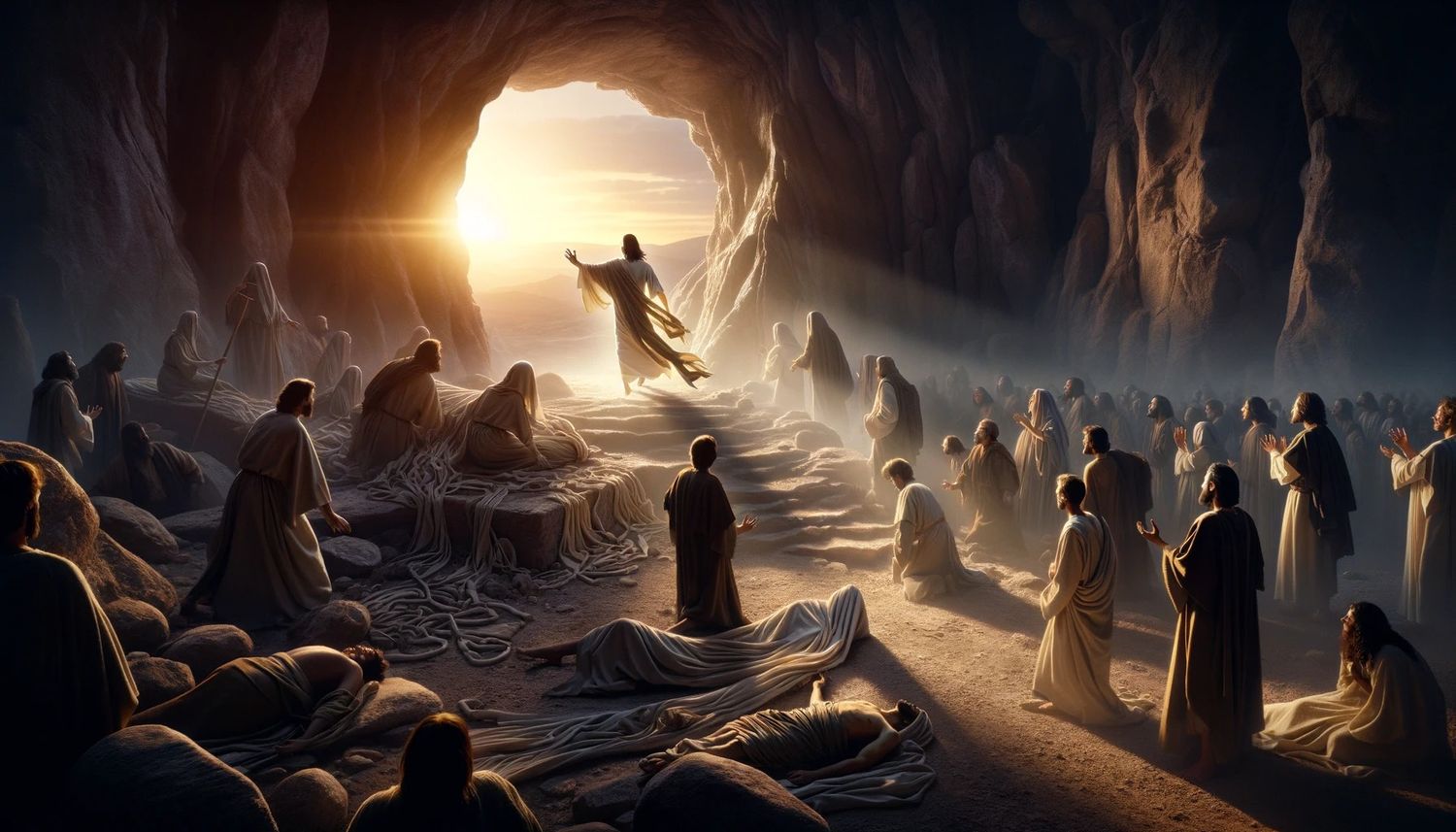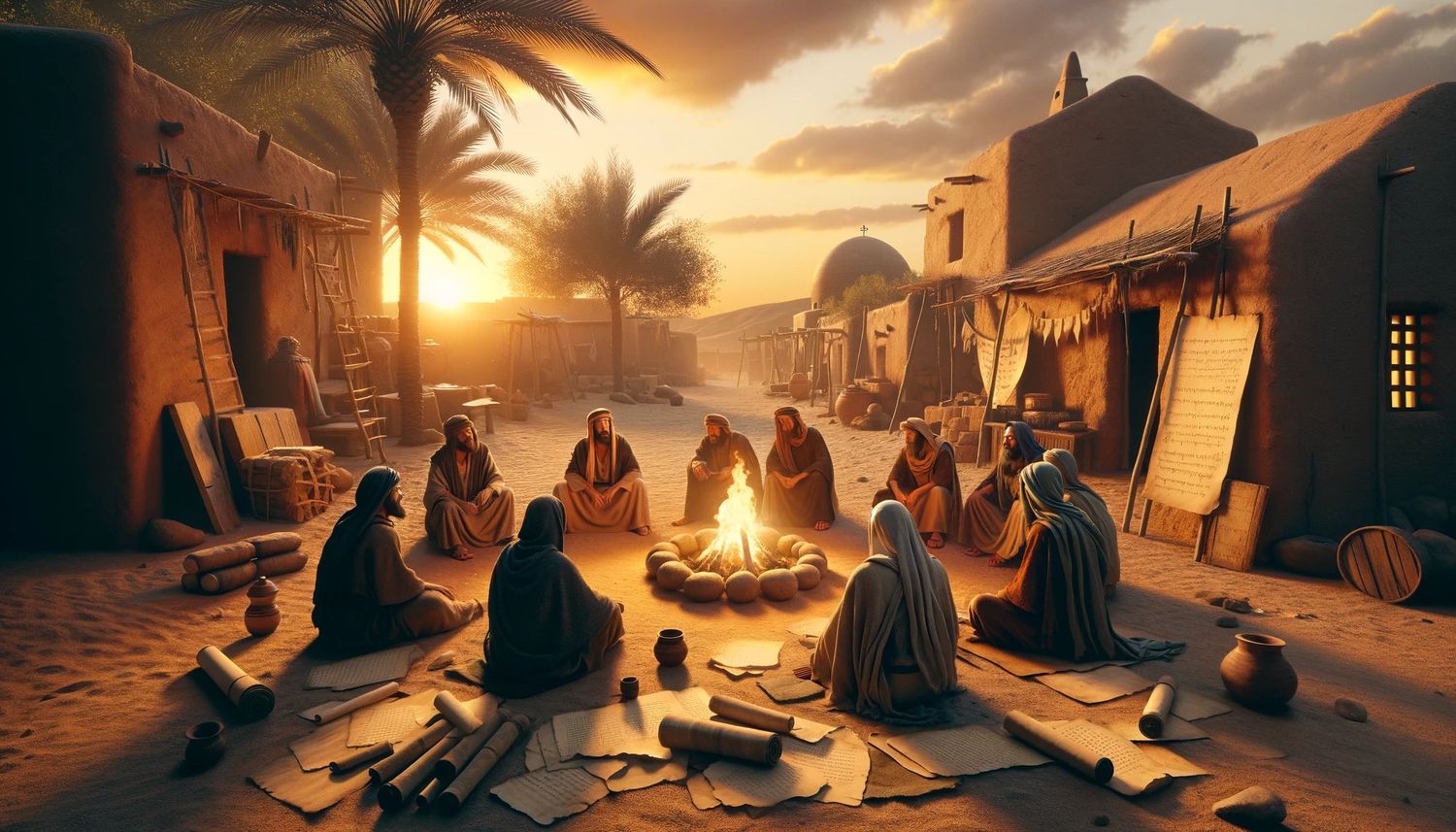Home>Christian Videos>Bible Stories>How Many Gospels In The Catholic Bible


Bible Stories
How Many Gospels In The Catholic Bible
Published: March 6, 2024
Peter Smith, Editorial Director at Christian.net, combines deep insights into faith, politics, and culture to lead content creation that resonates widely. Awarded for his contributions to religious discourse, he previously headed a major organization for religious communicators, enhancing dialogue on faith's societal impacts.
Discover the number of gospels in the Catholic Bible and explore the captivating stories within. Uncover the richness of biblical narratives and teachings. Explore now!
(Many of the links in this article redirect to a specific reviewed product. Your purchase of these products through affiliate links helps to generate commission for Christian.net, at no extra cost. Learn more)
Table of Contents
Introduction
How many Gospels are there in the Catholic Bible? This is a question that has intrigued many individuals seeking to understand the composition of the Catholic Bible. The Gospels are a central part of the New Testament, and they provide accounts of the life, teachings, death, and resurrection of Jesus Christ. In this article, we will explore the formation of the Catholic Bible, the inclusion of the four Gospels, and the canonical status of these Gospels within the Catholic tradition. Additionally, we will touch on other Gospels and their status in the Catholic tradition. Let's delve into the rich history and significance of the Gospels in the Catholic Bible.
Read more: How Many Gospels Are In The Bible
The Formation of the Catholic Bible
The formation of the Catholic Bible is a complex and intricate process that spans centuries. The Catholic Bible, also known as the Christian Bible, is divided into two main sections: the Old Testament and the New Testament. The Old Testament contains texts that are sacred in both Judaism and Christianity, while the New Testament focuses on the life and teachings of Jesus Christ and the early Christian Church.
The process of forming the Catholic Bible began with the collection and preservation of ancient texts. The Old Testament was largely inherited from the Jewish tradition, and its canon was established over time. The New Testament, on the other hand, was written by various authors in the first century A.D. These texts were circulated among early Christian communities and were eventually recognized as authoritative and inspired.
The formation of the New Testament canon involved careful consideration of which texts should be included. The early Church Fathers played a crucial role in discerning the authenticity and theological soundness of the writings. Over time, a consensus emerged regarding the inclusion of certain texts, and by the fourth century, the core of the New Testament canon was widely accepted.
The process of finalizing the canon of the Catholic Bible was formalized at the Councils of Hippo (393 A.D.) and Carthage (397 A.D.), where the list of canonical books was officially ratified. These councils affirmed the inclusion of the four Gospels – Matthew, Mark, Luke, and John – along with the other books of the New Testament. The decision to include these specific Gospels was based on their apostolic authorship, traditional usage in the early Church, and theological consistency with the broader Christian faith.
In summary, the formation of the Catholic Bible involved the preservation, recognition, and formalization of sacred texts that are foundational to the faith and practice of Catholic Christians. The process was guided by the Holy Spirit working through the early Christian community, and it resulted in the compilation of the Old and New Testaments as we know them today.
The Four Gospels in the Catholic Bible
The Catholic Bible contains four Gospels, each offering a unique perspective on the life, teachings, death, and resurrection of Jesus Christ. These Gospels are attributed to the authors Matthew, Mark, Luke, and John, and they hold a central place in the New Testament. Each Gospel presents a distinct narrative and theological emphasis, contributing to a comprehensive understanding of the person and work of Jesus Christ.
1. The Gospel of Matthew
The Gospel of Matthew is traditionally attributed to the apostle Matthew, also known as Levi, a tax collector who became one of Jesus' twelve disciples. This Gospel emphasizes Jesus' role as the fulfillment of Old Testament prophecies and the establishment of the new covenant. It presents Jesus as the long-awaited Messiah and the authoritative teacher of divine wisdom. The Gospel of Matthew is structured around five major discourses of Jesus, highlighting his teachings on various aspects of the kingdom of God.
2. The Gospel of Mark
The Gospel of Mark is attributed to John Mark, a companion of the apostle Peter. This Gospel is known for its brevity and focus on action, portraying Jesus as a powerful and compassionate miracle worker. Mark's Gospel emphasizes Jesus' deeds more than his words, depicting him as the suffering servant who came to serve and give his life as a ransom for many. The Gospel of Mark is characterized by its fast-paced narrative and vivid descriptions of Jesus' ministry and passion.
Read more: How Many Words Are In The Gospels
3. The Gospel of Luke
The Gospel of Luke is attributed to the physician Luke, a companion of the apostle Paul. This Gospel is distinguished by its attention to historical detail and emphasis on Jesus' compassion for the marginalized and outcast. Luke's Gospel presents Jesus as the universal savior, extending his ministry to all people, regardless of social status or ethnicity. It includes unique parables, such as the Good Samaritan and the Prodigal Son, and provides a comprehensive account of Jesus' birth, ministry, death, and resurrection.
4. The Gospel of John
The Gospel of John is attributed to the apostle John, the beloved disciple of Jesus. This Gospel stands out for its profound theological reflections on the identity of Jesus as the Word made flesh. John's Gospel emphasizes the divine nature of Jesus, portraying him as the eternal Son of God who brings light and life to the world. It contains unique discourses and signs that reveal the significance of Jesus' ministry and culminates in a powerful portrayal of his death and resurrection.
In summary, the four Gospels in the Catholic Bible offer diverse yet complementary portraits of Jesus Christ, providing a rich tapestry of his life, teachings, and redemptive mission. Each Gospel contributes to the holistic understanding of the Christian faith and invites readers to encounter the person of Jesus in a profound and transformative way.
The Canonical Status of the Four Gospels
The four Gospels in the Catholic Bible hold a canonical status, signifying their recognized authority and inspiration within the Catholic tradition. The term "canon" refers to the official list of sacred books that are accepted as divinely inspired and normative for faith and practice. The canonical status of the four Gospels was established through a careful process of discernment and affirmation within the early Christian community.
The criteria for determining the canonicity of the Gospels included apostolic authorship, traditional usage in the liturgical and teaching life of the Church, and theological coherence with the apostolic faith. The early Church Fathers played a pivotal role in affirming the canonical status of the Gospels, recognizing their apostolic origins and their essential role in conveying the life and teachings of Jesus Christ.
The Gospel of Matthew, ascribed to the apostle Matthew, was esteemed for its Jewish-Christian perspective and its emphasis on Jesus as the fulfillment of Old Testament prophecies. The Gospel of Mark, associated with John Mark and his close connection to the apostle Peter, was valued for its vivid portrayal of Jesus' deeds and its role in preserving the apostolic tradition. The Gospel of Luke, attributed to the physician Luke and companion of the apostle Paul, was esteemed for its meticulous historical research and its emphasis on Jesus' compassion for all people. The Gospel of John, linked to the apostle John, was revered for its profound theological insights into the identity of Jesus as the eternal Word of God.
The canonical status of the four Gospels was formally affirmed at the Councils of Hippo and Carthage in the late fourth century, where the list of canonical books, including the Gospels, was officially ratified. These councils provided a definitive declaration of the authoritative status of the Gospels within the Catholic Church, ensuring their inclusion in the New Testament canon.
The four Gospels continue to hold a central place in the liturgical and devotional life of the Catholic Church, serving as the primary sources for understanding the life, teachings, death, and resurrection of Jesus Christ. Their canonical status underscores their enduring significance as foundational texts that guide the faith and practice of Catholic Christians, inviting believers to encounter the living Word of God in the person of Jesus Christ.
Other Gospels and Their Status in the Catholic Tradition
In addition to the four Gospels included in the New Testament of the Catholic Bible, there are other ancient texts that are often referred to as "Gospels." These texts, known as the apocryphal or non-canonical Gospels, were written in the early centuries of Christianity and offer alternative accounts of the life and teachings of Jesus Christ. While these Gospels are not recognized as part of the official canon of the Catholic Bible, they have played a role in shaping the diverse traditions and beliefs within Christianity.
-
The Gospel of Thomas: This Gospel is a collection of sayings attributed to Jesus and is often considered a "sayings Gospel." It was discovered among the Nag Hammadi library in Egypt in 1945. The Gospel of Thomas contains 114 sayings attributed to Jesus and lacks a narrative structure. While it is not included in the Catholic New Testament, it has garnered interest for its unique portrayal of Jesus' teachings and its potential influence on early Christian thought.
-
The Gospel of Mary: This Gospel presents a dialogue between Jesus and his disciples, including Mary Magdalene. It offers insights into the role of Mary Magdalene in the early Christian community and has sparked discussions about the diversity of perspectives within early Christianity. The Gospel of Mary is not part of the Catholic canon but has contributed to scholarly discussions on the role of women in the early Church.
-
The Gospel of Judas: This Gospel gained attention following its translation and publication in the early 21st century. It presents a controversial portrayal of Judas Iscariot, depicting him as a collaborator with Jesus rather than a traitor. The Gospel of Judas offers a unique perspective on the events leading to Jesus' crucifixion and has prompted scholarly debate about its historical and theological significance.
While these and other non-canonical Gospels are not included in the official canon of the Catholic Bible, they have been the subject of scholarly inquiry and have contributed to discussions about the diversity of early Christian beliefs and traditions. The Catholic Church, guided by the decisions of early councils and the ongoing discernment of the Magisterium, has affirmed the canonical status of the four Gospels while acknowledging the existence of other ancient texts that offer alternative perspectives on the life and teachings of Jesus Christ. These non-canonical Gospels serve as valuable historical and theological resources, prompting reflection on the rich tapestry of early Christian thought and the development of the New Testament canon.
Read more: How Many Parables Are In The Gospels
Conclusion
In conclusion, the Catholic Bible contains four Gospels – Matthew, Mark, Luke, and John – which hold a central place in the New Testament and the faith of Catholic Christians. These Gospels offer diverse yet complementary portraits of Jesus Christ, providing a rich tapestry of his life, teachings, and redemptive mission. The canonical status of the four Gospels underscores their recognized authority and inspiration within the Catholic tradition, guiding the faith and practice of believers. While other non-canonical Gospels exist, the Catholic Church has affirmed the canonical status of the four Gospels while acknowledging the value of these alternative perspectives as historical and theological resources. The Gospels continue to invite readers to encounter the living Word of God in the person of Jesus Christ, shaping the spiritual journey and devotion of Catholic Christians throughout the ages.













